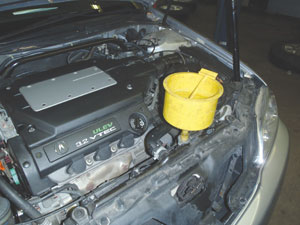Read up on essential products in our annual technical sales seminar section. We review 12 products you need to know better to move products.
Brakes
Fuel Pumps
Gaskets
Batteries
Wipers
Catalytic Converters
Shocks
Engine Management
Lighting
Belts and Hoses
Oxygen Sensors
Antifreeze
Like most product categories, the shelf space required to stock all the various types of coolants has expanded greatly in recent years. Fifteen years ago, there was only one type of coolant for all makes and models: a green-colored (or yellow depending on the brand) ethylene glycol antifreeze with a fast-acting anti-corrosion package formulated with borates, phosphates and silicates to protect iron and aluminum for 24 months or 30,000 miles.
 Except for competing brands with slightly different additive packages, there was essentially one type of antifreeze on the shelf. There was no confusion or disagreement about what type of antifreeze should be used in different vehicle applications. They were all interchangeable and pretty much the same.
Except for competing brands with slightly different additive packages, there was essentially one type of antifreeze on the shelf. There was no confusion or disagreement about what type of antifreeze should be used in different vehicle applications. They were all interchangeable and pretty much the same.
In 1996, all of this changed when General Motors introduced “Dex-Cool” antifreeze as their factory-fill coolant. Supplied by Texaco/Havoline, Dex-Cool still used ethylene glycol as its main ingredient, but replaced the traditional corrosion inhibitors with a new “Organic Acid Technology” (OAT) additive. The coolant was also dyed orange to distinguish from ordinary antifreeze.
Within a few years, other auto makers switched to their own long-life coolants. In 2001, Chrysler began using a “hybrid” (HOAT) formula coolant that includes silicates for extra aluminum protection. In 2002, Ford began using their own proprietary HOAT formula in their trucks and SUVs, and in all their cars from 2003 on. The Japanese and Europeans automakers also have been using their own OAT and HOAT formula coolants for many years (as far back as 1985 for Mercedes, BMW, Volvo and others).
To make matters even more confusing, all of these new coolants are dyed different colors. The automakers also insist that any replacement coolant must meet their specifications to keep the new car warranty in effect.
As all of this unfolded, aftermarket coolant suppliers were faced with a dilemma: Should they have different coolants for each of the different applications, or should they have a single universal coolant that is compatible with all makes and models? Some have opted for the former while others have opted for the latter.
Depending on the brands your store sells, your shelves may have a traditional green antifreeze formulated for older vehicles (or budget-conscious customers who are looking for the least expensive coolant), two or more application-specific coolants such as an orange-dyed equivalent for GM Dex-Cool applications, and a yellow-dyed product for Ford, Chrysler and other import HOAT applications, and/or some type of universal coolant for all makes and models.
Regardless of what type of coolant a customer chooses to use in their vehicle, there are a couple of key points to keep in mind: Different brands and types of coolants can be mixed together. It won’t cause an engine to overheat, or the cooling system to sludge up, or allow corrosion to destroy the engine, radiator or gaskets. But, adding traditional green antifreeze to a cooling system that already contains a long life OAT or HOAT antifreeze will shorten the service life of the coolant to that of a regular coolant (24 months or 30,000 miles).
Motorists should be advised to change their coolant every five years regardless of mileage for preventive maintenance. This will minimize the risk of corrosion damage to the engine or cooling system. None of these coolants are “lifetime” products. Eventually the corrosion inhibitors will wear out and have to be replenished by changing (or recycling) the coolant.











